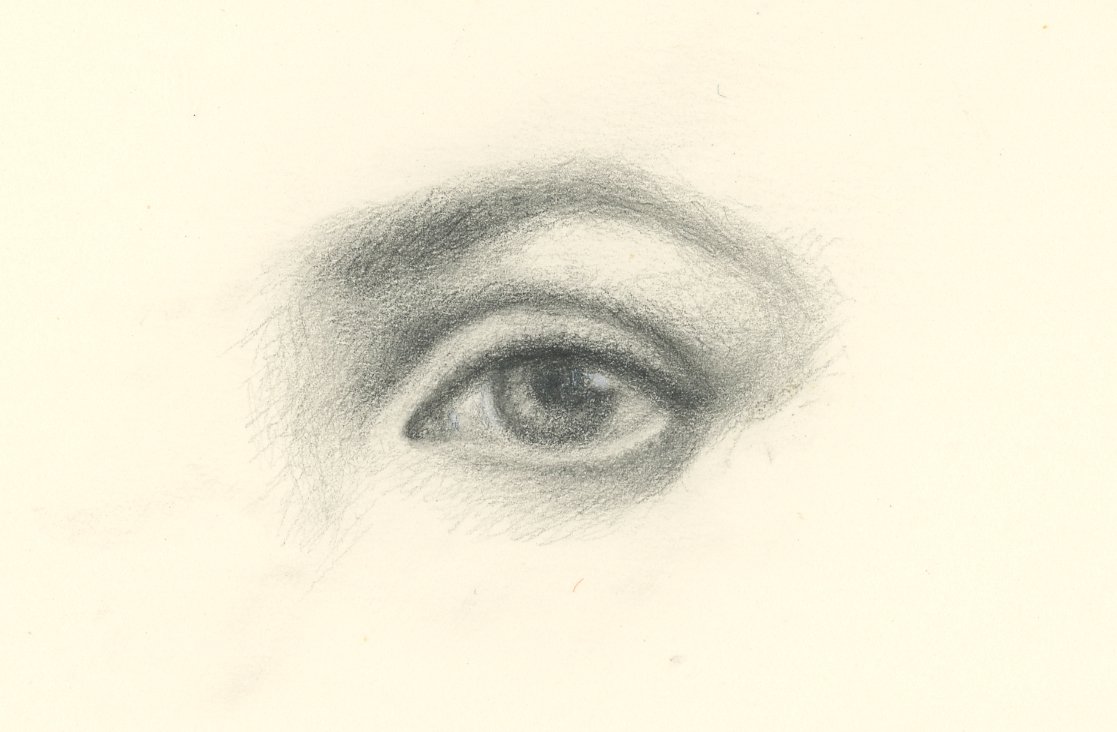
Eyes can be hard to draw. I think the trick is to not think about how complicated an eye actually is. The key is to break it down into a series of interlocking shadow shapes. In other words, you are drawing the shadows themselves, and by doing this, the shape of the eye emerges.
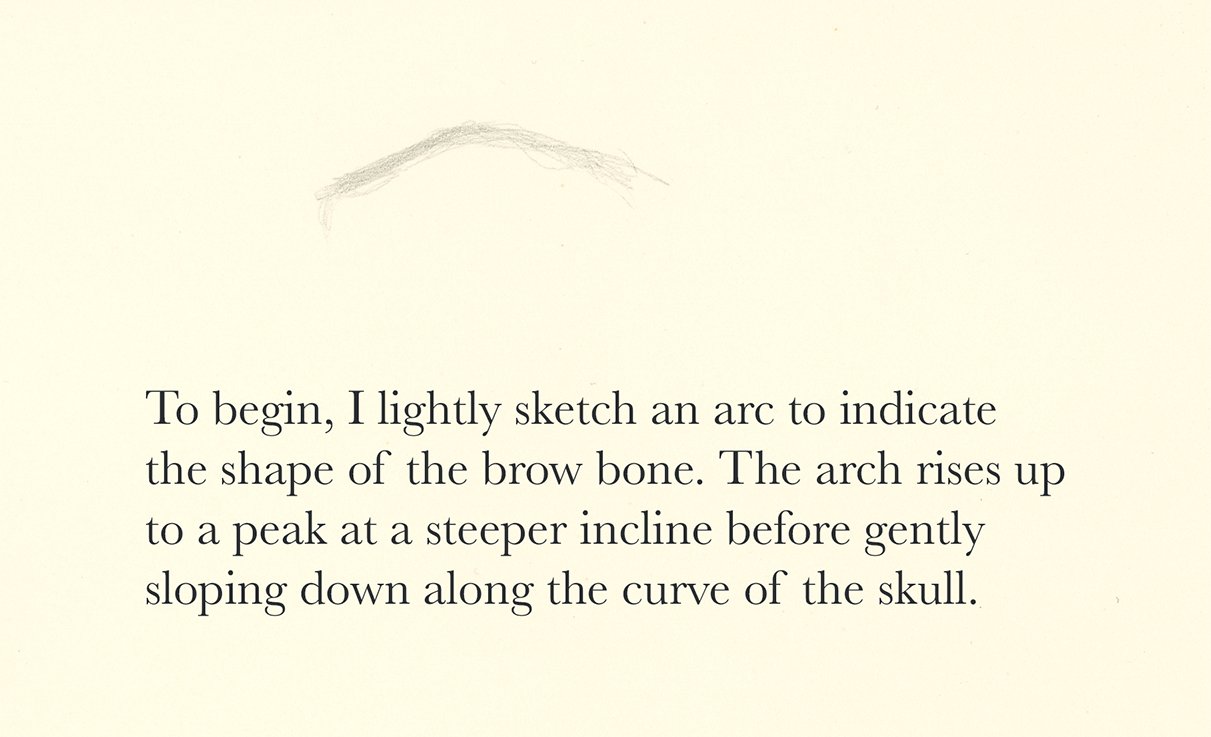
Some light pencil strokes give me initial guidelines.
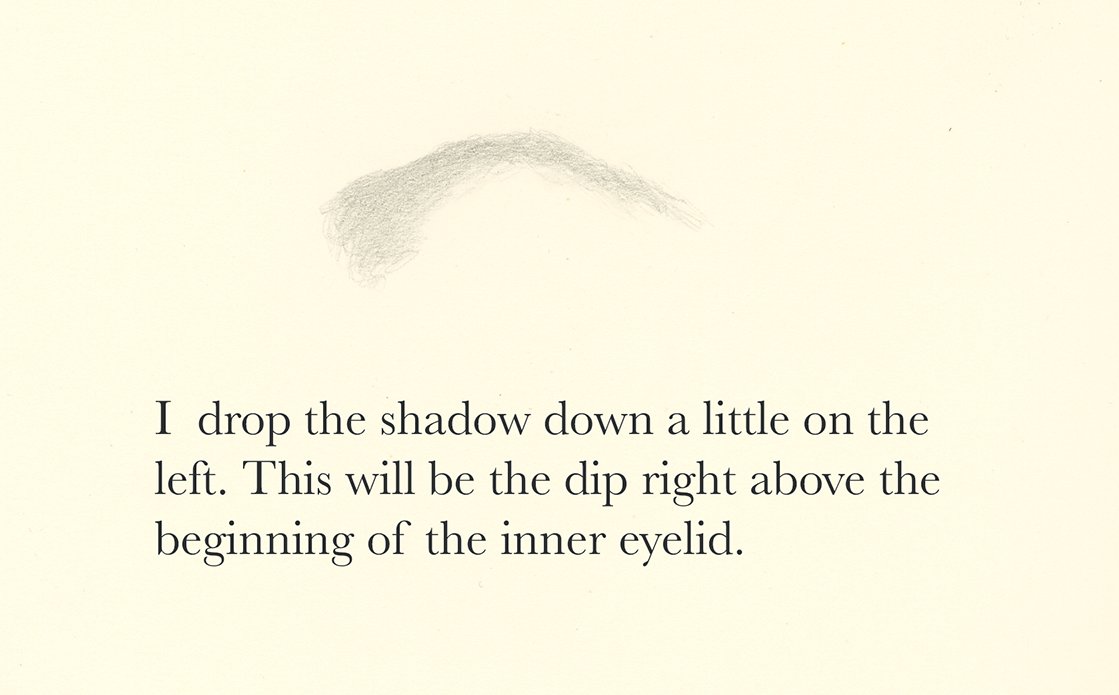
Now I start to add tone (value) to the triangular depression left by the recession of the eye socket.
You don't want to go too dark too fast. Remember, you are only drawing the shadow shapes.
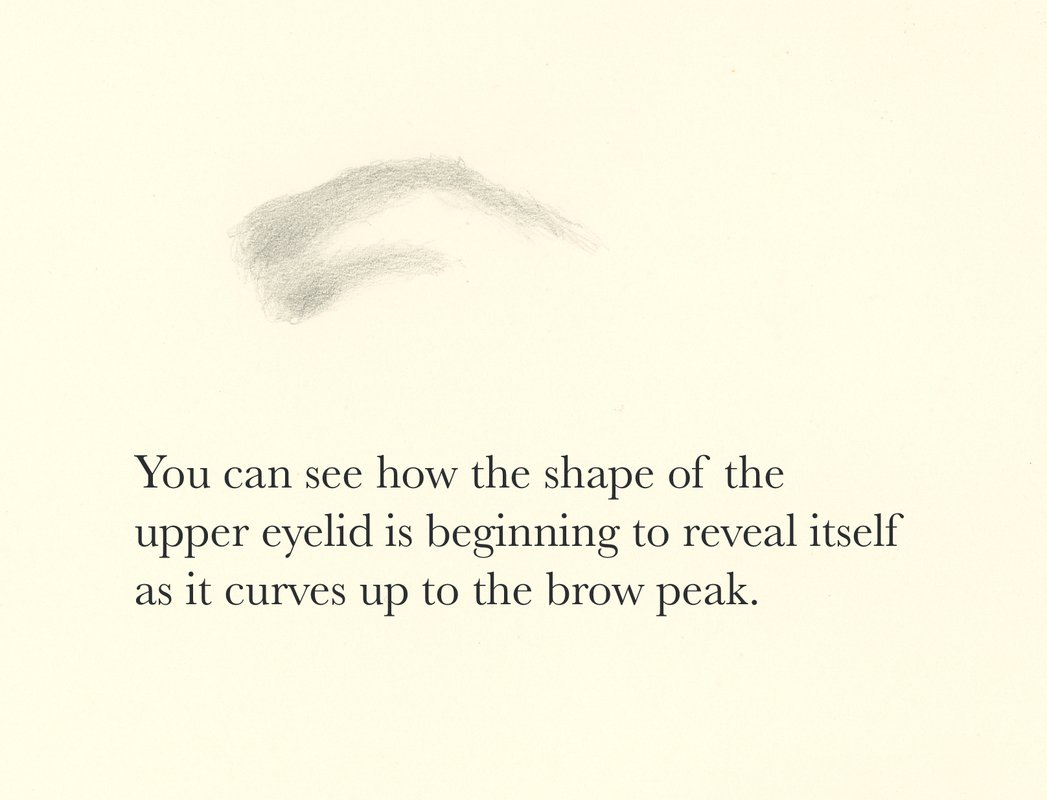
I am not outlining the eye itself; this is what can throw you off. No lines exist in nature - only edges of planes. When you use line by itself to indicate form, your drawing looks flat.
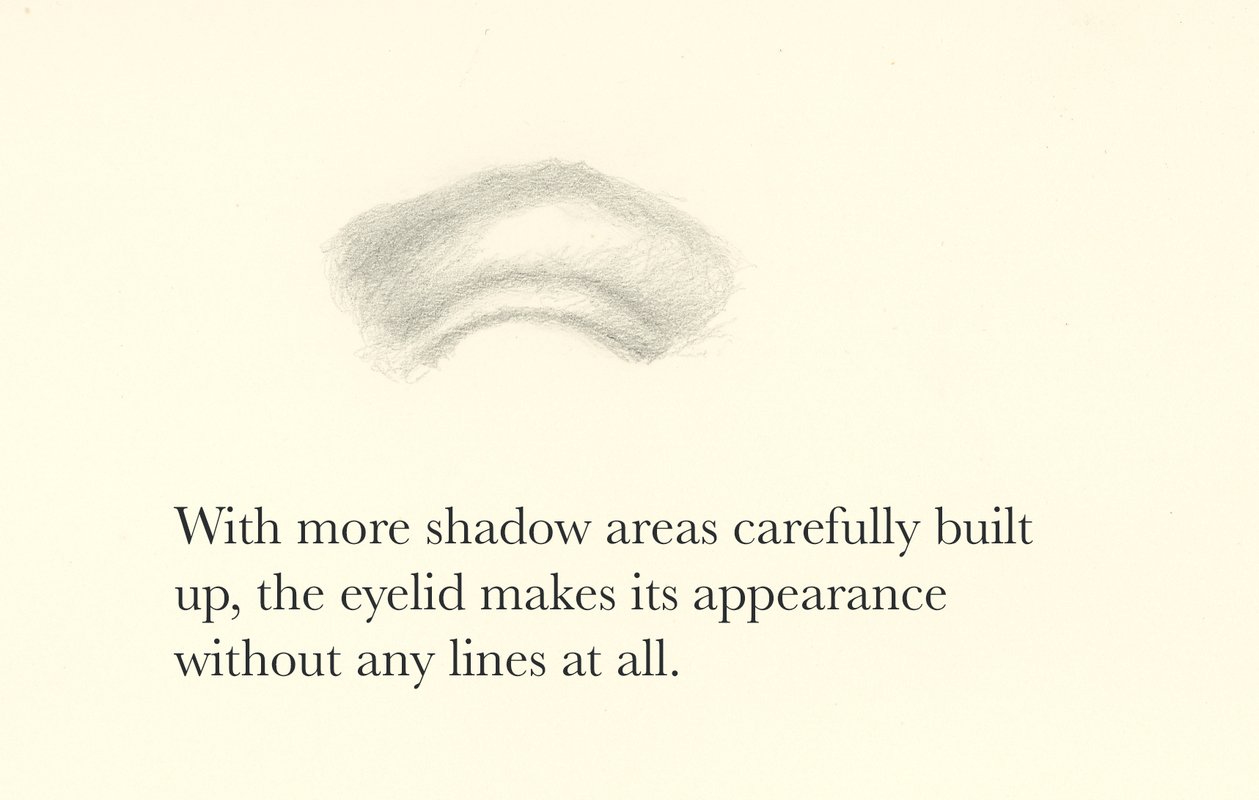
The folds and creases of an eye are nothing more than shapes advancing or receding in space.

Those aren't eyelashes. What you see is the cast shadow from the upper eyelid - no lines used at all.
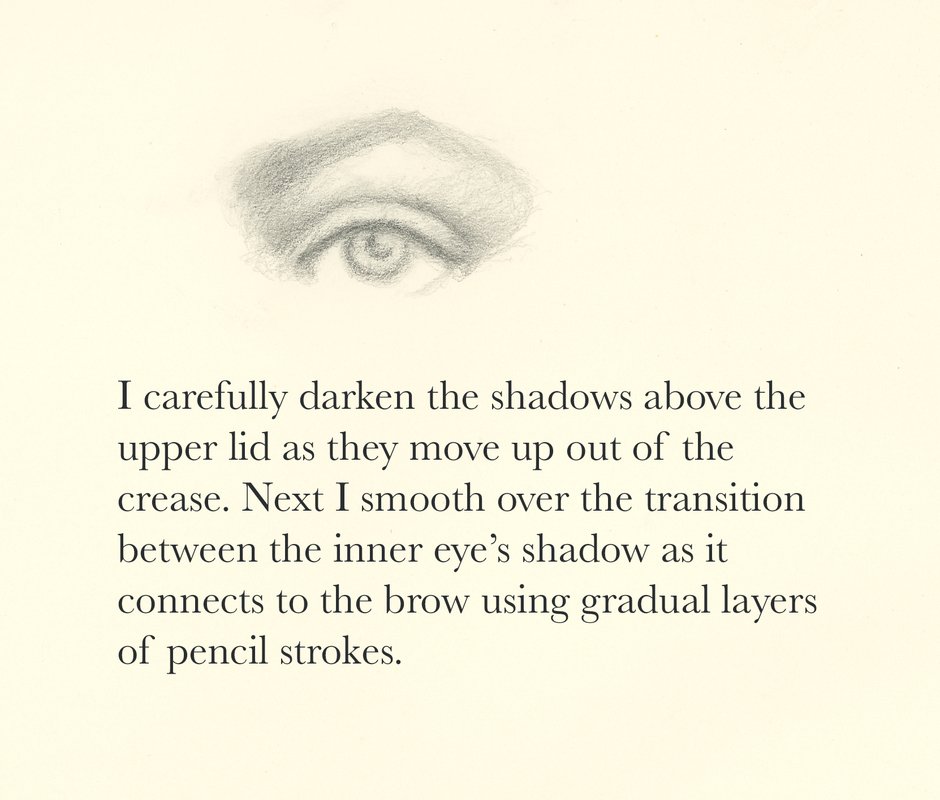
Now I add the pupil and the darker colored edge around the iris. By adjusting my lights and darks I create the illusion of curvature. The lighter areas come forward and the darker areas appear to recede.
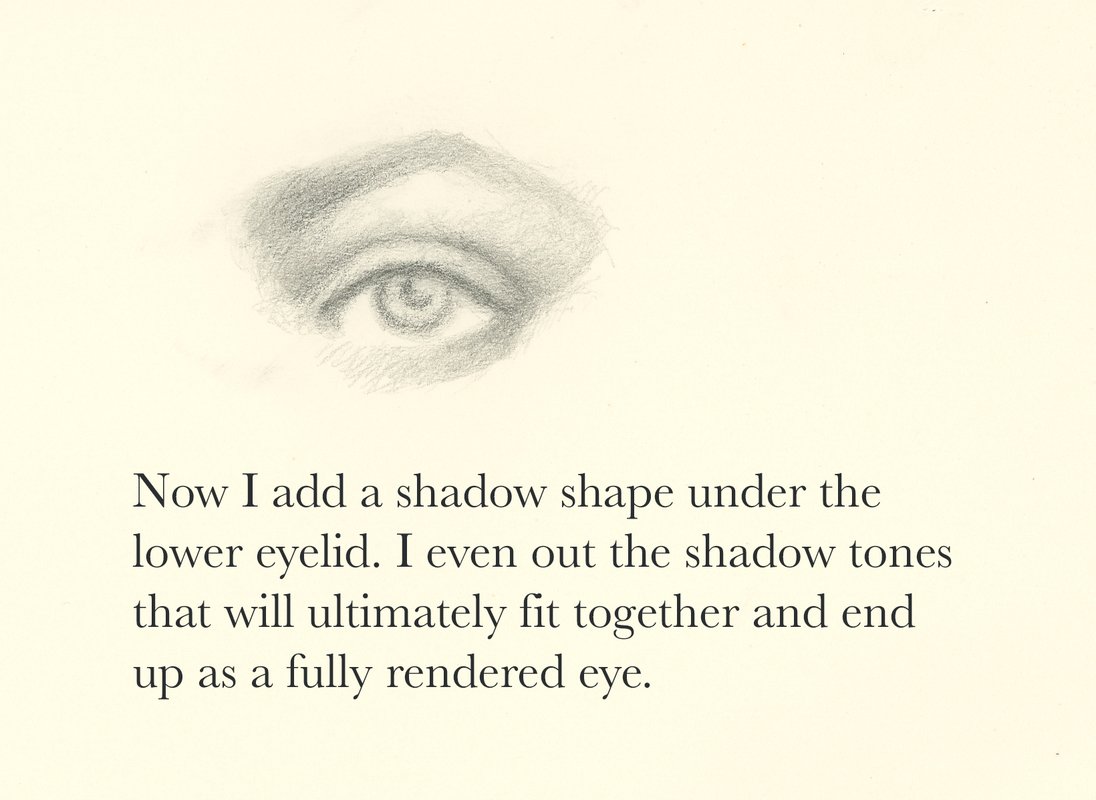
The lower eyelid protects the cornea and helps to keep the eye in its socket. Feel your eye from your eyebrow down over both eyelids. What happens to the lower lid? Its shadow ends right where the cheekbone begins to shift forward.
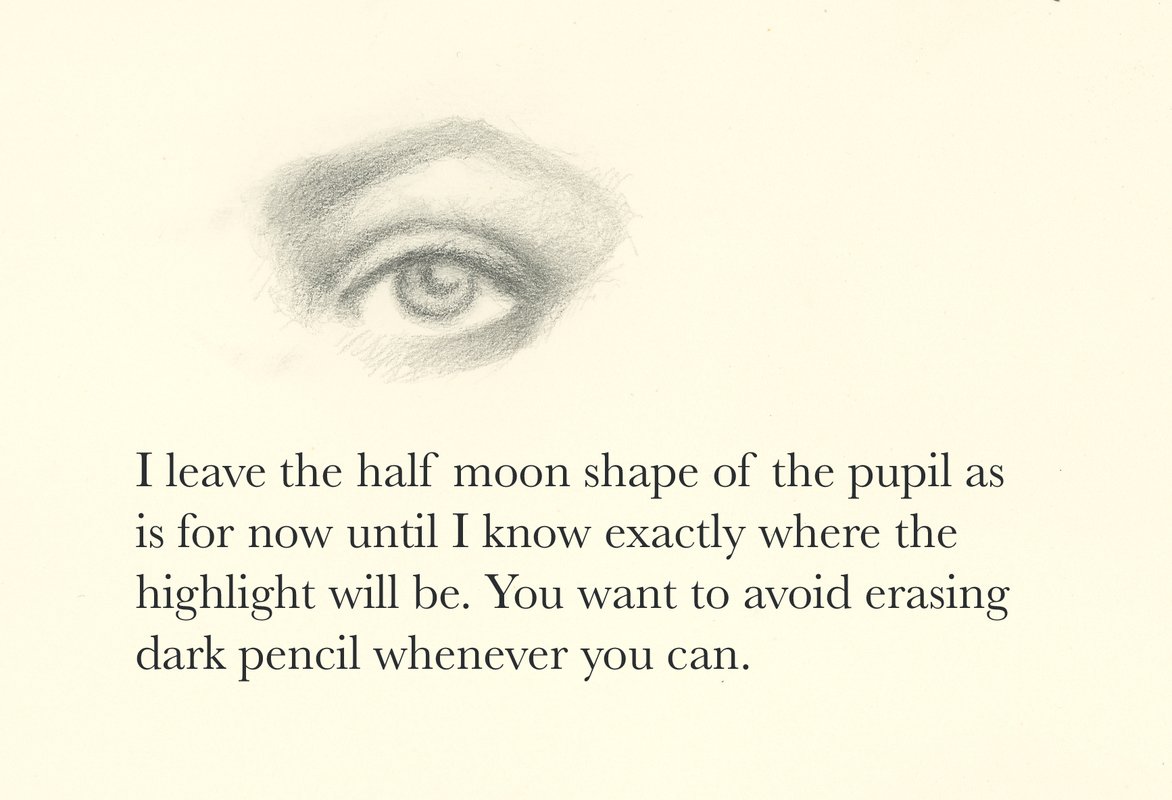
I darken areas to indicate hidden folds of the upper eyelid and intensify the darks of the eyebrow itself.
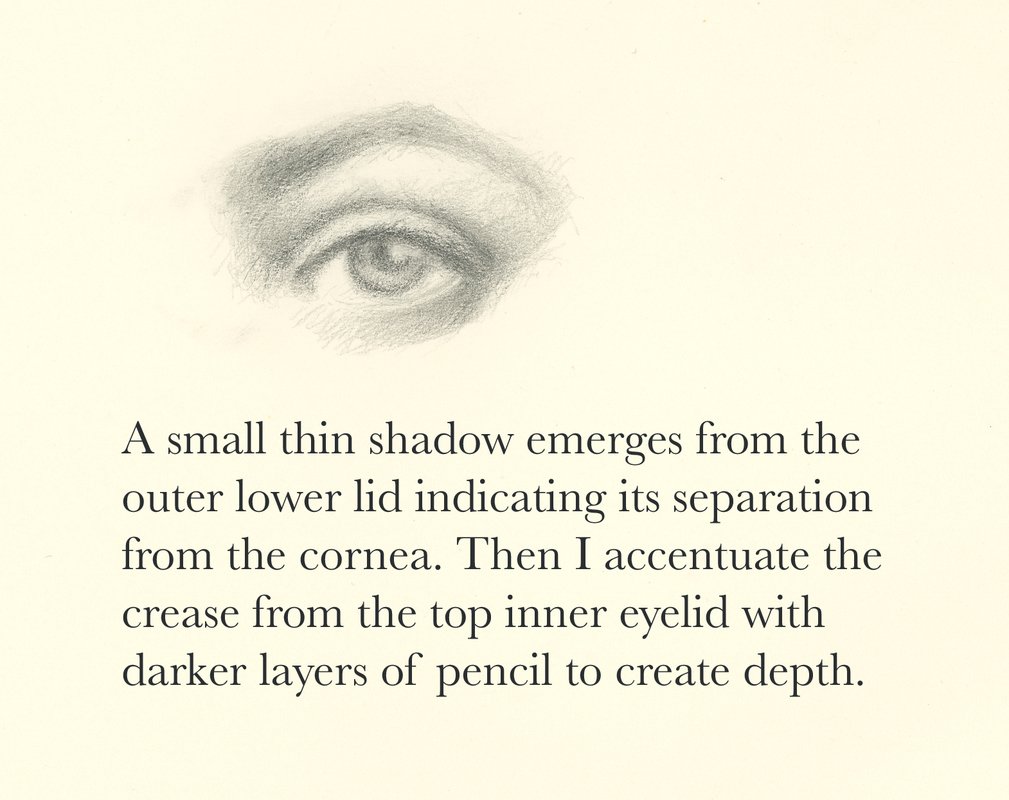
The white of the paper separates the thin width of lower eyelid; the dark edge is where the eyelashes appear. A common mistake is to draw lines emanating from the linear edge of the eyeball. It's important to take this little space into consideration.
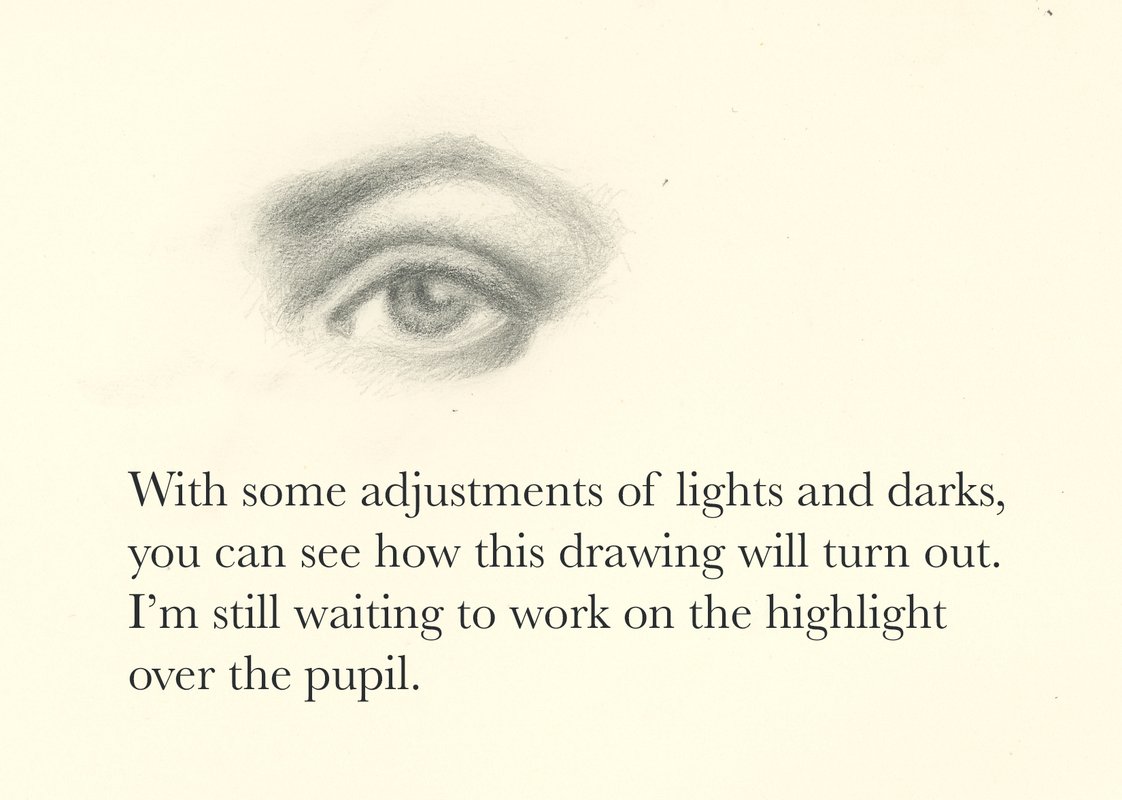
Now I start work on the inside corner of the eye - the pink area, which is called the lacrimal canaliculi.
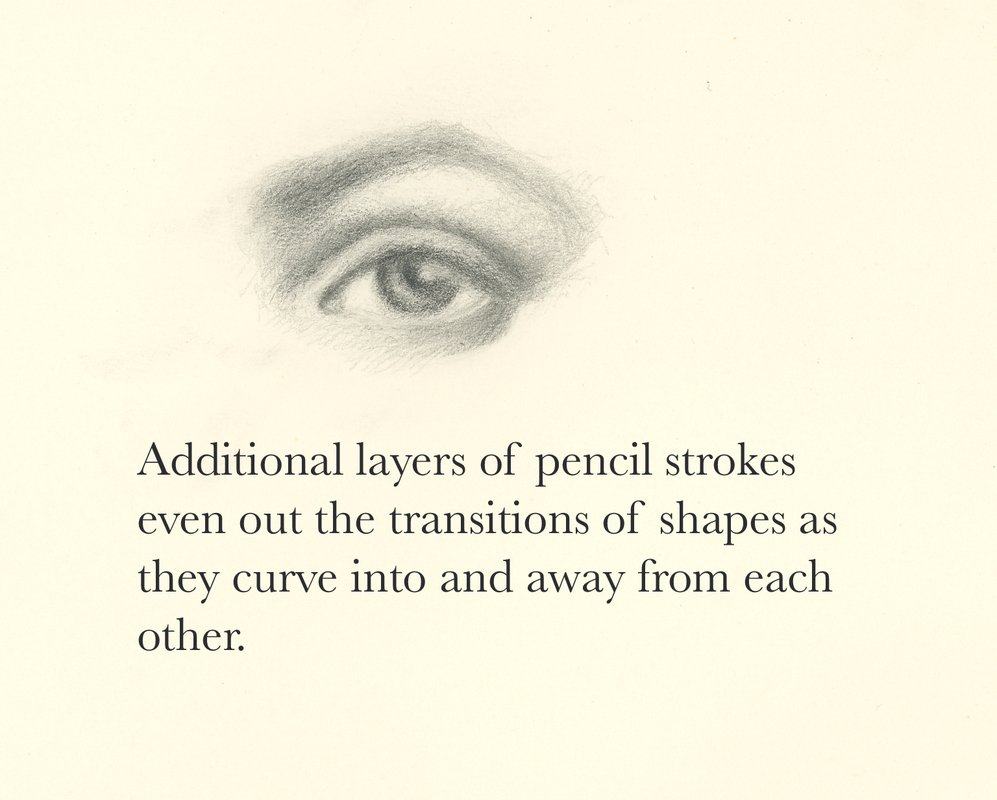
It's not just a flat pink. Look at it.
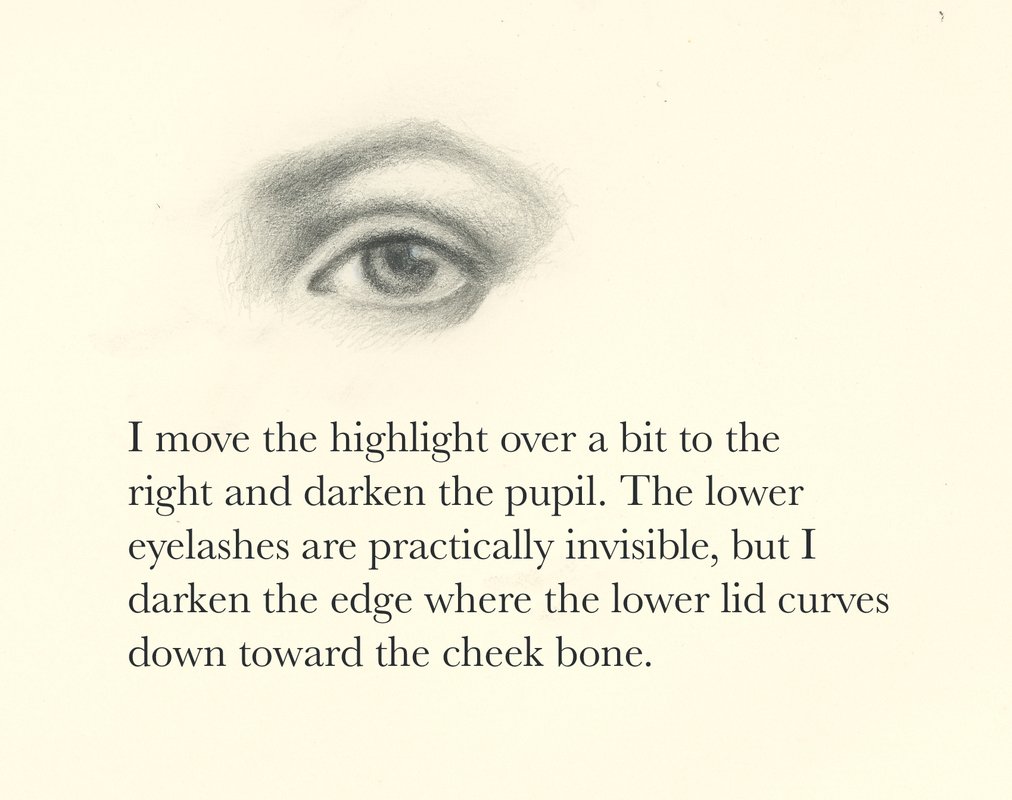
I have added darker layers and moved the highlight over - more fine tuning of the iris.

An emphasis on the highlight with a white pastel pencil completes the drawing.
And the finished eye, drawn only in a series of shadow shapes that fit neatly together like a puzzle. Approaching facial features this way is guaranteed to improve your understanding of eye anatomy.
Paper used - my favorite, Strathmore 400 series drawing paper. It's a warm vanilla color.
©Johanna Westerman 2016, created exclusively for steemit
